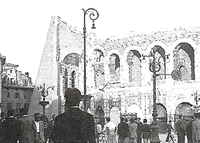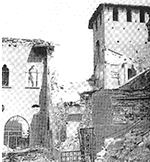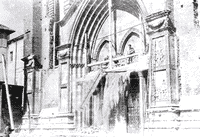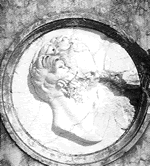| The
Roman Age: the Roman amphitheatre called the Arena, the Roman theatre,
the Stone Bridge, the Gavi Arch and the monumental gates (Porta Borsari
and the Porta Leona) are the most important remains of a very prosperous
age. |

|
| The
Barbarian and feudal ages: S. Maria Matricolare (remains in the
Cathedral), Santo Stefano, San Siro and the walis of Theodoric and Berengarius
(ruins). |
|
| The
Age of the Commune: the basilicas of San Zeno and San Fermo, the
churches of SS. Apostoli, San Lorenzo, San Nazzaro, SS. Trinità.
S. Maria in Organo, the Palazzo del Comune, the bronze doors of S. Zeno,
the Wheel of Fortune in San Zeno, the ciborium in the Cathedral and
the baptistery of San Giovanni in Fonte. |
|
| The
Scaligers' Seigniory: the church of Sant'Anastasia, the Scaligeri
Tombs, the Scaligeri Castle and Bridge. Frescoes by M. Cicogna in San
Zeno, Sant'Anastasia, San Fermo, by Altichiero in Sant'Anastasia and
by Giacomo da Verona in SS. Trinità. |
|
| The
Domination of the Visconti and of Venice: The Franchini building
in via Emilei and the Del Bene building in San Zeno, the Palazzo del
Consiglio and the Scala della Ragione, Frescoes by Pisanello in Sant'Anastasia
and San Fermo, by Stefano da Zevio in the Castelvecchio Museum, the
Bellini crucifixion in the Cathedral and the Mantegna triptych in San
Zeno. |
 |
| Austrian
Verona (1814-1866): after the French occupation by Napoleonis armies,
comes the period of Austrian domination that brought the next spate
of building toward the mid-1 9th-century - most of it military. Verona
was made the capital of the Austrian occupation of Lombardy and Veneto,
and hence the key to the famous Quadrilateral, the Austrian defence
network. The Venetian walis were modernized with Carnot-type walis |
|

